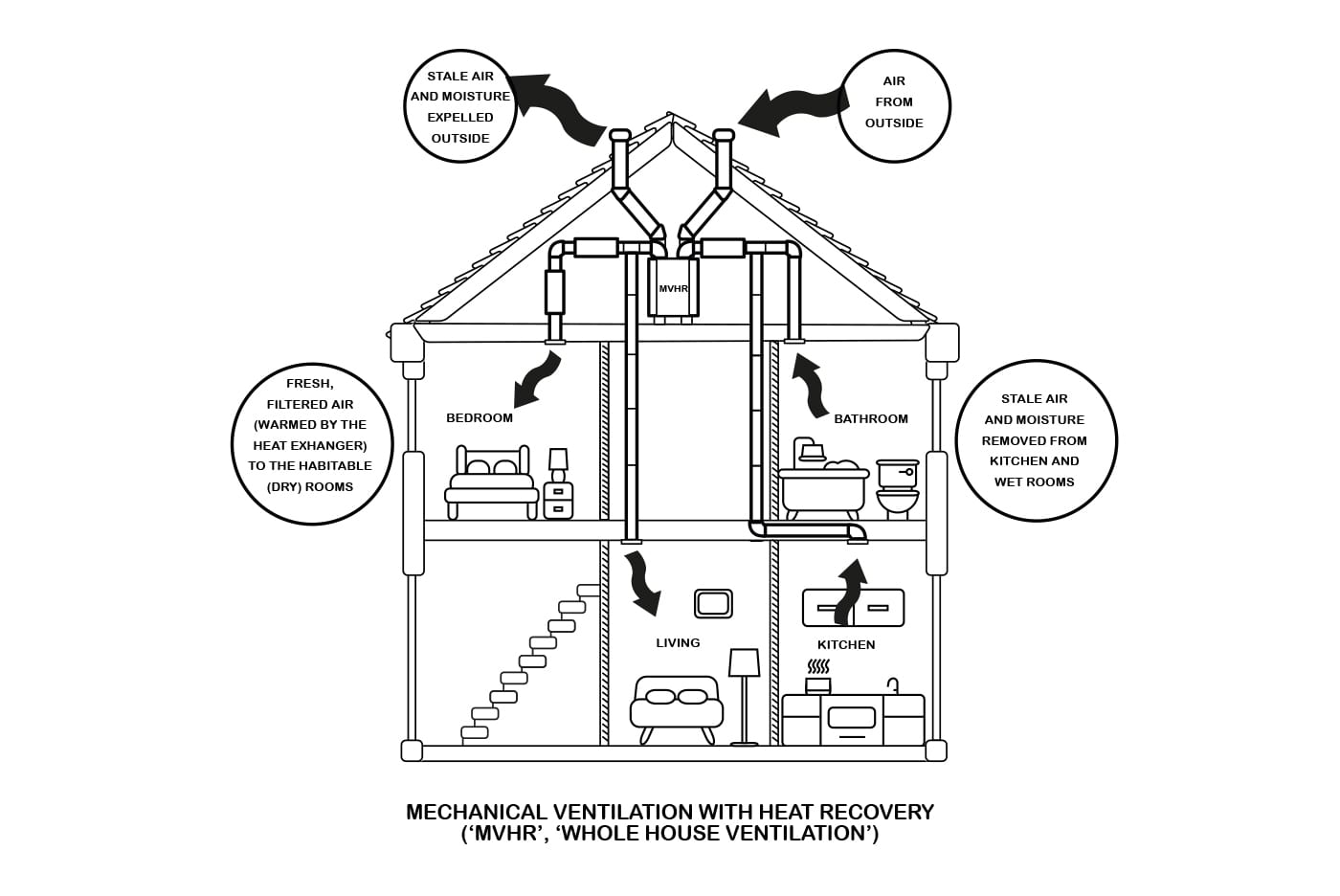Ventilation Guide
Fresh air is an essential part of our lives. But for many of us and especially during the recent Coronavirus Pandemic, our jobs can determine that we will spend a lot of our time indoors. This provokes the need for a good home ventilation system. Ventilation helps your home rid itself of moisture, smoke, cooking odours, and indoor pollutants. But without a good ventilation system in place – you can’t control the airflow in your space.
What are the Benefits of the Correct Home Ventilation System?
A good ventilation system will help to expel a build-up of pollutants, bacteria, moisture and unpleasant odours, such as body odour.
Too much fresh air can mean costly energy bills, which is why the right home ventilation system helps to control the airflow while regulating the required health and safety levels.
Damp conditions and condensation can also cause health issues, lead to mould on surfaces and cause respiratory problems. The right home ventilation system will help reduce condensation.
Many people living in the same home can cause the indoor environment to become hot and stuffy. A well-ventilated home will instantly be more comfortable and there are many heating and cooling systems that can regulate the home’s temperature.
Indoor air pollution coupled with bad ventilation can lead to a number of health problems including headaches, allergies, asthma, rashes and sinusitis. However, this can be avoided with the installation of the correct home ventilation system.
General improvements in house construction, building regulations and much higher levels of insulation in modern dwellings mean that houses are becoming almost airtight. Building regulations require a minimum rate of ventilation approximately equivalent to half an air change per hour for the whole building. Even if building regulations did not require this, a minimum level of ventilation is such a good idea as it helps prevent condensation and the respiratory problems outlined above.

Mechanical Ventilation Heat Recovery
As stated in the Building Regulations 1995 Part F, amended 2010:
“Ventilation systems in buildings result in energy being used to heat fresh air taken in from outside and, in mechanical ventilation systems, to move air into, out of and/or around the building. ”
The diagram on the right shows the internal arrangement of a fairly sophisticated heat recovery unit. This uses a counter-flow heat exchanger – the most efficient type. This particular model uses high-efficiency 190mm diameter backwards curved fans which result in low sound levels for any given airflow. The warm stale air from the wet rooms and the cold fresh air from the exterior both pass through a heat exchanger, in opposite directions and without mixing. The heat contained in the extract air is transferred to the incoming fresh air, which is introduced back into the living areas of the building.
Continuous Mechanical Extract Ventilation
As modern houses have more wet rooms, so it becomes more economical to replace several individual extractors with one Central Extract Ventilation unit. With a CEV unit, only one vent to the exterior is required (via wall grill or roof vent) in order to expel the stale air and only one electrical connection with the obvious savings in installation costs over individual extract fans.
Using central extract ventilation, the replacement fresh air still enters the house through trickle vents. The fan runs continuously, allowing a gentle and imperceptible flow of air through the building. A CEV unit will have an override boost setting for occasions when there are unpleasant smells or excessive moisture which need to be extracted. Whilst this is the minimum ventilation required by Building Regulations, it does mean that warm (stale) air is expelled from the building and is replaced by cold fresh air through the trickle vents, resulting in a loss of heat.


Intermittent Extract Fans
Traditionally, ventilation has been provided by individual extractor fans fitted to bathrooms and other ‘wet’ rooms. These provide short term ventilation and are noisy. The extracted air is replaced by fresh air entering the house through trickle vents in the window frames. These are neither attractive nor particularly sensible (having spent a lot of money on a well-insulated house with high specification double glazing, a hole is made in the window frame in order to create a draught!).
Mechanical Ventilation Heat Recovery
Heat Recovery Ventilation does not produce heat but minimises the amount of heat that would otherwise be lost through ventilation, with degrees of efficiency varying between 70 – 90%, depending on the model of the MVHR unit. In doing so, it reduces the amount of heat that needs to be produced to keep a house warm.
Heat Recovery Ventilation systems are designed to run continuously, virtually silently, providing clean fresh air throughout the building. Normal operation is at a very low speed, allowing the gentle movement of air from dry rooms to wet rooms and then to the exterior. Heat recovery units have two or more speed settings so that larger quantities of air can be extracted as the need arises. Depending on which system is chosen, humidistats, digital programmers, CO2 sensors and timers can also be used to control the ventilation.
Heat Recovery Ventilation offers the added bonus of filtering the incoming air so that there is less dust internally (and therefore less dusting to be done). Pollen filters are available, which is a real boon to those who suffer from allergies, asthma and hayfever.

Let’s Get Specific!
Discover all of our ventilation systems available. Our expert design team at CVC Ltd will look at every aspect of your house build to ensure that the perfect home ventilation system is integrated from the start!